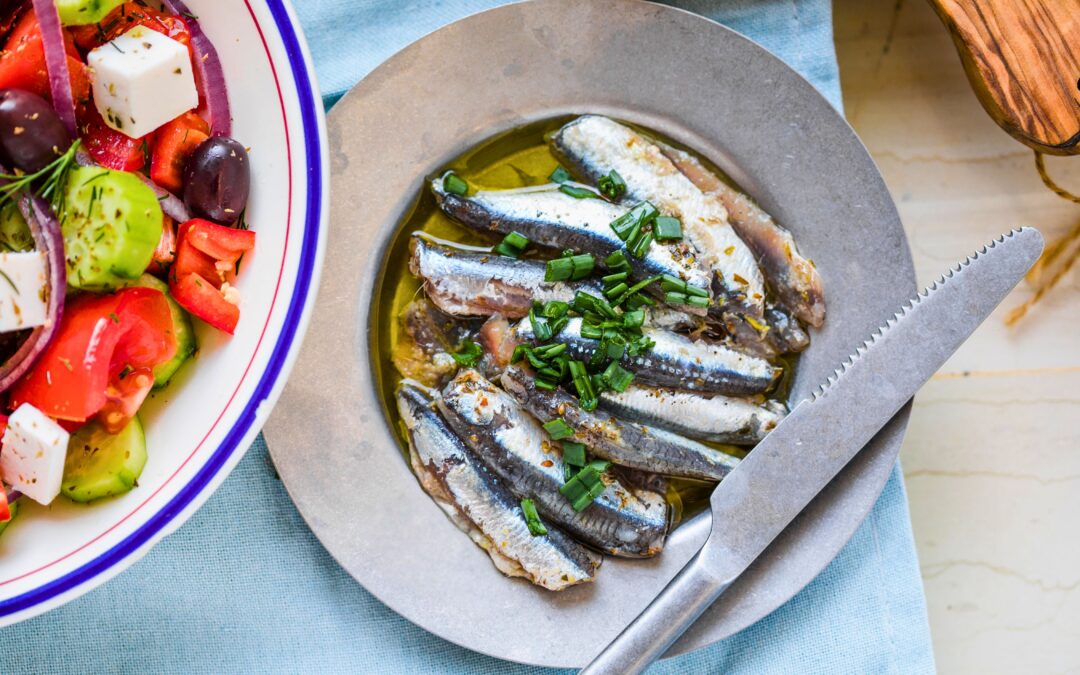Though olives are ubiquitous throughout Spain, the nearby countryside of Marbella produces special varieties such as Manzanilla Aloreña, Spain's first Denomination of Origin (DO) table olive. Locals marinate them with garlic, thyme, and fennel—a snack worth trying in tapas bars around Marbella.
There’s something slow about the way people eat in Marbella. It’s not lazy—just deliberate. A kind of careful slowness, where every bite feels like it has a story behind it. In the winding streets of Marbella’s Old Town or along the sparkling coastline, meals stretch long into the afternoon. The wine flows, the plates keep coming, and no one seems in a hurry to leave.
This is Andalusian cuisine in its purest form. Honest. Deeply rooted. Olive oil glistening on fresh bread, the sharp bite of a well-made gazpacho, anchovies so fresh they taste like the sea. Marbella, for all its glitz, doesn’t forget where it comes from—and the food shows it.
- El Pimpi – Where Tradition Meets the Table
You can’t talk about Andalusian cuisine without mentioning El Pimpi. Originally a Málaga institution, its Marbella outpost captures that same unpolished charm. The kind of place where the servers know the regulars by name, and there’s always that hum of conversation under the canopy of vines.
You sit on the terrace, the sun working its way down, a glass of fino sherry in hand, and you realise: this isn’t just lunch. It’s ritual.
The menu reads like a love letter to Andalusia—salt-cured Iberian ham, anchovies bathed in olive oil, grilled octopus dusted with paprika. It’s hearty, simple, unpretentious.
- Address: Bulevar Príncipe Alfonso von Hohenlohe, s/n, 29602 Marbella, Málaga, Spain
- Contact: +34 952 820 900
- Website: puenteromano.com/dining-drinks/el-pimpi/
- Skina – Where Old Meets New
Tucked away in Marbella’s Old Town, Skina isn’t loud about its two Michelin stars. The sign is small, almost easy to miss. But step inside, and it’s clear—this is fine dining, but without the theatrics.
The space is intimate, barely a handful of tables. The plates, though? Grand in their simplicity. Think razor-thin slices of tuna belly, local olive oil pooling around it. Or a reimagined ajoblanco—almond soup, but colder, smoother, sharper.
Every dish is Andalusia, reinterpreted. But there’s respect here. You can taste it in the way the chef handles the ingredients—local, seasonal, nothing wasted.
- Address: Calle Aduar, 12, 29601 Marbella, Málaga, Spain
- Contact: +34 952 765 277
Website: restauranteskina.com/en/

Throughout Marbella and throughout Andalucía, extra virgin olive oil is the basis of nearly every meal. The area has some of the oldest olive trees in Spain, and Marbella's chefs regard local olive oil with the same respect that the French have for wine. It's drizzled, cooked with, or added as a finishing flourish—even served alone with bread as an appetiser.
- Marbella Club Hotel – Timeless Elegance, Andalusian Flavours
Then there’s the Marbella Club Hotel, where the word “heritage” means something. Opened in the 1950s as a haven for European aristocrats, it still holds that air of understated luxury.
But the food? Grounded. Chef Yahav leans into Andalusian staples—salmorejo with a drizzle of local olive oil, chargrilled red mullet, slow-cooked lamb shoulder—each dish treated with care, not flash.
You sit in the garden, fountains trickling nearby, the scent of jasmine in the air, and it all feels—right. Like it’s always been this way.
- Address: Bulevar Príncipe Alfonso von Hohenlohe, s/n, 29602 Marbella, Málaga, Spain
- Contact: +34 952 822 211
- Website: marbellaclub.com/gastronomic-experience/andalucia
Traditional Andalusian Dishes to Know
- Rabo de Toro – Oxtail stew, slow-cooked until it barely holds together, soaked in a rich red wine sauce.
- Espetos – Sardines, grilled over an open fire, charred just enough, eaten right off the skewer by the beach.
- Ajoblanco – Cold almond and garlic soup, smooth and refreshing, often topped with green grapes.
- Gazpacho – A punch of tomato, cucumber, and garlic—served ice cold.
- Pescaíto Frito – Lightly fried anchovies, squid, and shrimp—nothing fancy, just fried to golden perfection.
Why Marbella Is More Than a Destination
Buying property here isn’t just about securing square metres of prime Spanish coastline. It’s about investing in a way of life. One that moves at a different speed. One that values slow mornings, long lunches, and nights that spill out onto terraces under the stars.
1. A Market That Holds Its Value
Marbella’s real estate isn’t just resilient—it’s booming. The Costa del Sol saw a 20% rise in luxury property transactions in 2024 (cadenaser.com). Investors aren’t here for a quick flip—they’re here for legacy buys. Properties that families pass down.
2. From Beachfront Penthouses to Hillside Estates
Whether it’s a sleek, glass-walled penthouse overlooking the Mediterranean or a sprawling villa in Sierra Blanca, Marbella offers homes that are as much about design as they are about lifestyle.
3. Where Luxury Is Lived, Not Displayed
Here, high-end doesn’t mean flashy. It means waking up to mountain views. It means having a private chef cook paella for friends on your terrace. It’s the kind of luxury that feels lived-in.
4. Year-Round Livability
Mild winters. Hot, dry summers. And 320 days of sun a year. Marbella isn’t just for summer holidays—it’s for living, working, and staying.
Let Marbella Be Your Next Chapter
At Ultimate Lifestyles, we don’t just sell properties. We connect people with spaces that fit their lives, their futures, their moments. Marbella isn’t just another dot on the map. It’s a place to build something lasting.
Browse our curated listings today at ultimate-lifestyles.com
Or reach out for a private consultation: [email protected] | +34 951 12 07 12
Because some investments aren’t just financial—they’re personal.

